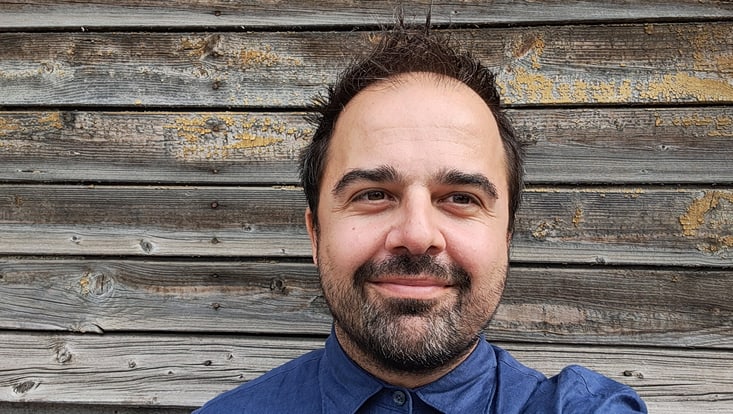Assoc. Prof. Dr. Luca Palozzi
Curriculum
Luca Palozzi is Associate Professor in the History of Medieval Art at the Università di Pisa. He holds a PhD in Art History from the Scuola Normale Superiore. Before joining Pisa in 2022, he held academic positions at Villa I Tatti, the Kunsthistorisches Institut in Florenz, and the University of Edinburgh. He specializes in medieval Italian art, namely sculpture, with an emphasis on the relationship between art theory and practice; the dialectic between the different artistic media; materials and techniques; as well as issues of artistic geography, historiography and style. He is also interested in porosities between medieval science and art, in ideas of ‘naturalism’ and ‘the real’, and in how knowledge of the natural world was experienced, created, organized, and shared during the Middle Ages. Research events organized include the exploratory seminars “Casting the Real in the Middle Ages” (with Emanuele Lugli), that were held at the University of York in 2017, and in Edinburgh in 2018. In 2020, he co-organized with Ariella Minden and Alessandro Nova the international conference “Failure: Understanding Art as Process, 1150-1750” at the Kunsthistorisches Institut in Florenz. In 2025, he co-organized with Gregor Meinecke and Vera-Simone Schulz the international conference “Pseudo-scripts. (Il)legibility & Ornamentation” at the Scuola Normale Superiore in Pisa. His research has been supported by the Kress Foundation, the Max-Planck Gesellschaft, the British Academy for the Humanities and the Social Sciences, and the Henry Moore Foundation.
Publications (selection)
- ‘Nicola and Giovanni Pisano in Colour: On Seeing White and the Classical Canon’, in Sculptures polymatérielles du Moyen Âge et de la Renaissance en Europe et dans le bassin méditerranéen, edited by P. Sénéchal et al., Rome, Campisano, 2023, pp. 21–34.
- (with G. A. Vergani), ‘An Allegory of Prudence attributed to Nicola Pisano’s Workshop’, The Burlington Magazine, 1436, 2022, pp. 1126–1129.
- ‘Captive Ornament: A Lost Fatimid Model in the Pisano Workshop and its Historiography’, in L’arredo liturgico fra Oriente e Occidente (V-XV secolo). Frammenti, opere e contesti / Liturgical Furnishings between East and West (5th-15th Centuries). Fragments, Objects, and Contexts, edited by F. Coden, Cinisello Balsamo, Silvana editoriale, 2021, pp. 368–383.
- (with G. T. Bergkvist), ‘A Brief Cross-Disciplinary Study of Lion Paw Prints in Giovanni Pisano’s Pisa Pulpit’, Source: Notes in the History of Art, 37/4, 2018, pp. 215-224.
- ‘Before the Paragone: Visual Intelligence and the Critical Misfortune of Sculptors in the Trecento’, The Sculpture Journal, 26/3, 2017, pp. 283–304.
Research project: Virtus Vitalis: Observing, Depicting and Discussing Bodily Veins and Plant Vessels in the Thirteenth Century
This project examines the intersections of art, physiology and the scientia plantarum within the intellectual milieu of the thirteenth-century Papal Court – particularly in the wake of the establishment of the Corpus Domini at Orvieto in 1264. A distinctive scholarly tradition, from Nikolaus Pevsner to Jean Givens, has sought to account for the precision with which thirteenth-century craftsmen in France, England, and Germany approached and represented nature, especially botanical specimens. Works such as the leaves in the chapter house at Southwell, or the carved plant ornament on Pierre de Montreuil’s portal for Saint-Germain-des-Prés, continue to intrigue and puzzle scholars. The question of why such a degree of accuracy in the depiction of nature emerged around 1220, only to wane by the mid-fourteenth century, remains open. This project reframes the problem by focusing on the depiction of bodily veins and plant vessels in artworks commissioned by members of the Papal Court or individuals in its circle. The intellectual framework is distinctly Aristotelian and Dominican, with artistic repercussions evident, for instance, in the reliefs of Orvieto Cathedral and in funerary sculpture in Assisi and beyond. While maintaining a focus on issues of observation, reproduction, and their technical means, the project interprets the so-called Gothic naturalism through the lens of coeval discussions of vital force (virtus vitalis) in scientific, legal, and religious contexts.

